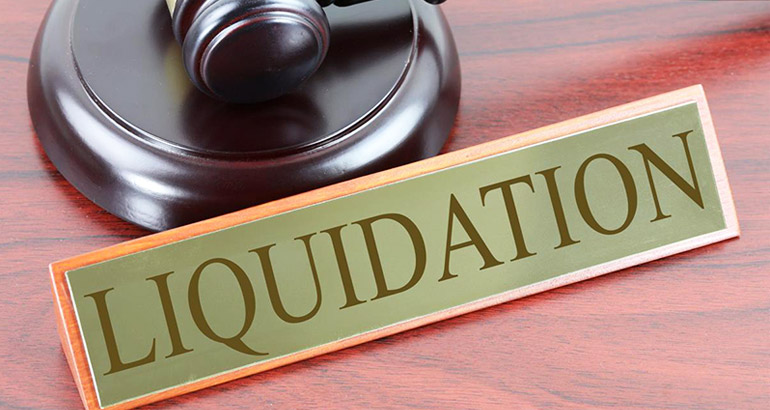All About Company Liquidation
All About Company Liquidation
Blog Article
The 45-Second Trick For Company Liquidation
Table of ContentsExcitement About Company LiquidationThe 8-Minute Rule for Company Liquidation7 Easy Facts About Company Liquidation ExplainedCompany Liquidation for BeginnersIndicators on Company Liquidation You Should Know
A liquidator is specifically assigned to manage the ending up of a business's events in order for it to be closed down typically when the business is going bankrupt. The liquidator is a neutral 3rd party who looks after the sale of company properties in order to settle any kind of exceptional financial obligations.Their function consists of, but is not restricted to: Impartial Overseer: A liquidator is tasked with functioning as a neutral 3rd party to manage the entire firm liquidation procedure. Develop Statement of Matters: Liquidators should create a detailed statement of affairs record. This record is dispersed to financial institutions, detailing the present financial status of business at the time of its liquidation.
After the liquidation of a company, its existence is eliminated from Firms Residence and it discontinues to be a lawful entity. If directors navigated the process uncreative, there would certainly be no charges or personal liability for firm debts expected. Currently, with a clean slate, supervisors can discover new business possibilities, though expert consultation is suggested.
4 Simple Techniques For Company Liquidation
As an example, if greater than 90% of all company investors concur, liquidation can occur on brief notice within seven days, the minimum legal notification for creditors. Nevertheless, typically, the larger the liquidation and the even more possessions and resources business has, the longer the process will take. 'Do I need to pay to liquidate my company?', the response will depend upon whether your business has any type of possessions remaining when selling off.

We recognize that no two business coincide, which is why we will certainly make the effort to learn more about your company so we can suggest the most effective program of action for you. We only operate in your benefits, so you can be totally confident in the solution we provide.
How Company Liquidation can Save You Time, Stress, and Money.
In the UK, there is an established procedure to shutting down or restructuring a limited business, whether it is solvent or financially troubled. This procedure is called liquidation and can only be managed by an accredited bankruptcy practitioner (IP) in accordance with the Insolvency Act 1986. There are four main kinds of firm liquidation procedure: Financial institutions' Voluntary Liquidation (CVL); Mandatory liquidation; Administration; and Members' Volunteer Liquidation (MVL).

In these circumstances, it is crucial that the firm discontinues trading; if business remains to trade, the directors might be held personally accountable and it can lead to the bankruptcy practitioner reporting wrongful trading, called misfeasance, which might result in lawsuit. The directors designate a bankruptcy expert and as soon as this has actually been concurred and confirmed, there is a meeting with the investors.
Of course, if there are no investors, this step of the process is not required (Company Liquidation). The IP takes control of the business and begins the business liquidation procedure. The Recommended Site supervisors are no much longer associated with what happens, including the sale of the business's properties. If the directors desire any of the assets, they can alert the IP.
Indicators on Company Liquidation You Should Know
The major difference is that the firm's creditors related to the court for a winding up order which requires the bankrupt business right into a liquidation process. Creditors take this action as a last hotel since they haven't received settlement through other forms of arrangement. The court selects a bankruptcy professional, also known as a main receiver, to conduct the compulsory company liquidation process.
This kind of company liquidation is not voluntary and directors' conduct is reported to the UK's Secretary of State once the liquidation procedure has been completed. As a result, any type of director that falls short to work together with the IP or has actually been associated with director misbehavior, or a fraudulent act, might result in major consequences (Company Liquidation).
It is made use of as a way to safeguard the firm from any type of legal activity by its financial institutions. The supervisors of the firm concur to make routine settlements to settle their financial go to these guys obligations over a duration of time. The designated manager takes care of the volunteer administration procedure, and obtains the repayments which they after that disperse to lenders according to the agreed quantities.
The Ultimate Guide To Company Liquidation
This gives the company with time to create a strategy going onward to save the company and stay clear of liquidation. At this point, directors hand control of the business over to the assigned administrator. If a firm is solvent however the directors and shareholders intend to close the organization, a Members Volunteer Liquidation is the right alternative.
The company liquidation process is managed by a liquidator selected by the supervisors and investors of the business and they need to sign a statement that there are no creditors staying. click here now The liquidation procedure for an MVL resembles that of a CVL in that properties are understood but the profits are distributed to the directors and the shareholders of the firm after the liquidator's charges have actually been paid.
Report this page